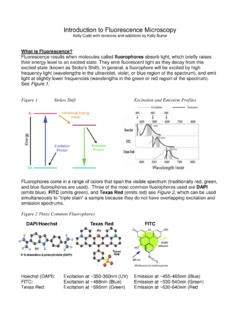Transcription of Dear Astronomy 101 Students, - College of the …
1 Dear Astronomy 101 students , Welcome to the study of Astronomy ! My name is Deborah Levine (I prefer to be addressed as Deborah or Dr. Levine if you prefer to use an honorific) and I'll be your guide to the Universe this semester. This orientation letter will provide you with some basic information to help you get started. This section of Astronomy 101 is a fully online class. All exams will be administered online, it will not be necessary to visit the TLC for exams. What is this class? In this class we will use a combination of readings, videos, discussions and tutorial assignments to develop an understanding of the Universe and Earth's place in it.
2 You will learn about the apparent motion of stars and galaxies as seen from the Earth, the nature and classification of stars, the nature and classification of galaxies, the large scale structure of the universe and the origin and evolution of the universe. Astronomy 101 Catalog Description: Surveys stellar and galactic Astronomy including the properties of atoms, light, stars, galaxies, and the formation and evolution of the universe. UC credit limitation: No credit for ASTRON-100. if taken after 101 or 102.. Student Leaning Outcome for this course: 1. Compare and contrast the properties, dynamics, and evolutionary cycles of different types of stars and galaxies.
3 Course Objectives: 1. Compare and contrast ancient and modern theories in Astronomy . 2. Explain seasons, moon phases, and eclipses as they relate to motions of the Sun-Earth-Moon system. 3. Utilize Kepler's Laws, Newton's Laws, and gravity to explain celestial motions. 4. Classify and compare optical systems and detectors used in Astronomy . 5. Analyze the nature of light and the information it contains. 6. Examine the properties and formation of stars, including the Sun. 7. Differentiate between various mechanisms for the evolutionary cycles of low mass and high mass stars.
4 8. Inventory the Milky Way Galaxy and examine its dynamics. 9. Classify galaxies by structure and content. 10. Describe current models for the universe from formation to possible fates. When you successfully complete this course it is my goal that you will be able to: Describe what science is, discriminate between legitimate science and pseudo-science and discuss the difference between science and belief systems Explain the importance of Astronomy , and science in general, for the general population. Understand news stories about Astronomy and be able to explain them to your friends and children.
5 Understand what you are seeing when you look up at the night sky. How do I find my class? Our classroom is built in the College 's Canvas system, which has replaced Blackboard. You can log in to Canvas from . Your initial login information will be: Username: <Your MyCanyons username (for example, jdsmith)>. Password: student Some tutorials are also available at the above URL. The course will be available to you by 8 AM on the first day of class and you must log in within 24 hours of the start of class, or you will be dropped from the course as a no-show. How do I find my instructor?
6 The best way to reach me is via email at I'll respond to email within 24. hours Monday to Friday (except holidays) during the duration of the course. There will also be other ways to contact me through Canvas. What do I need to participate in this course? The short version: time, diligence and regular access to a computer on the internet. A complete list of materials is available in the course syllabus which will be posted on Canvas. I plan to use an online textbook that is free for the assigned readings. These are available from the campus bookstore website. You may also find it useful to have a scientific calculator or calculator application.
7 You must have regular access to a computer. All of the work for this class is obtained and submitted online, and you will need to log in to Canvas at least every other day. You must check your CoC. student email regularly. And you will need to be able to read and produce PDF-formatted documents. There is no official set of system requirements for your computer. I work on a Mac using Firefox, but Canvas should work on all common platforms. It's even available on phones and tablets, but you will likely find it very challenging to complete assignments using only a tablet or phone.
8 I look forward to working with you as the semester unfolds! For now, go outside tonight and look up . think about what you see do you have any questions?









